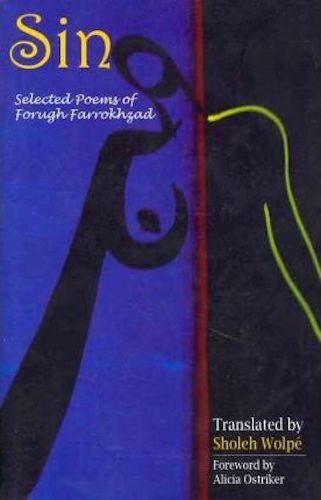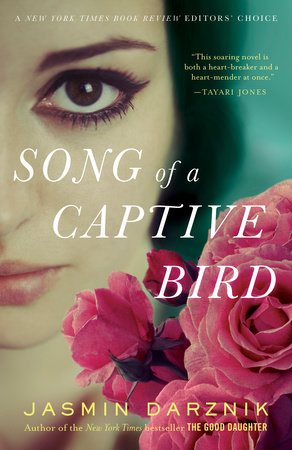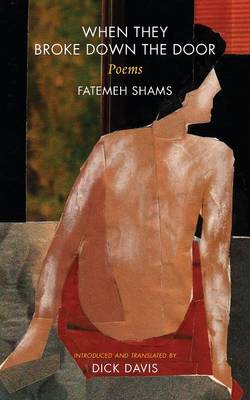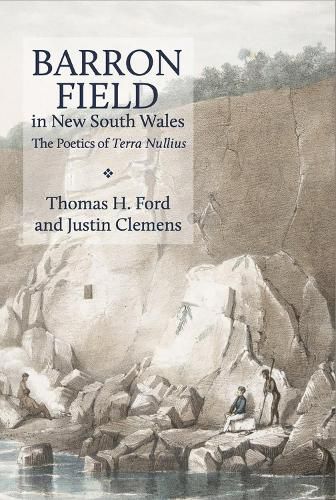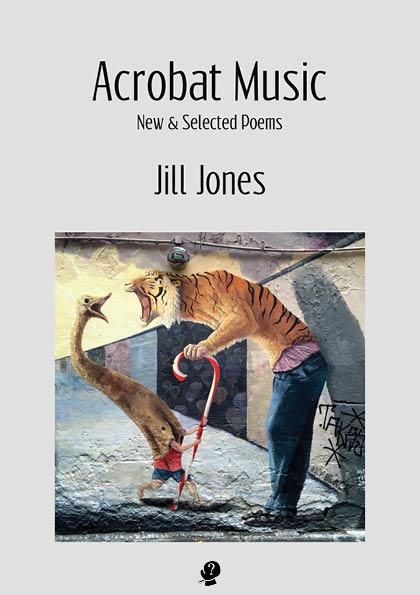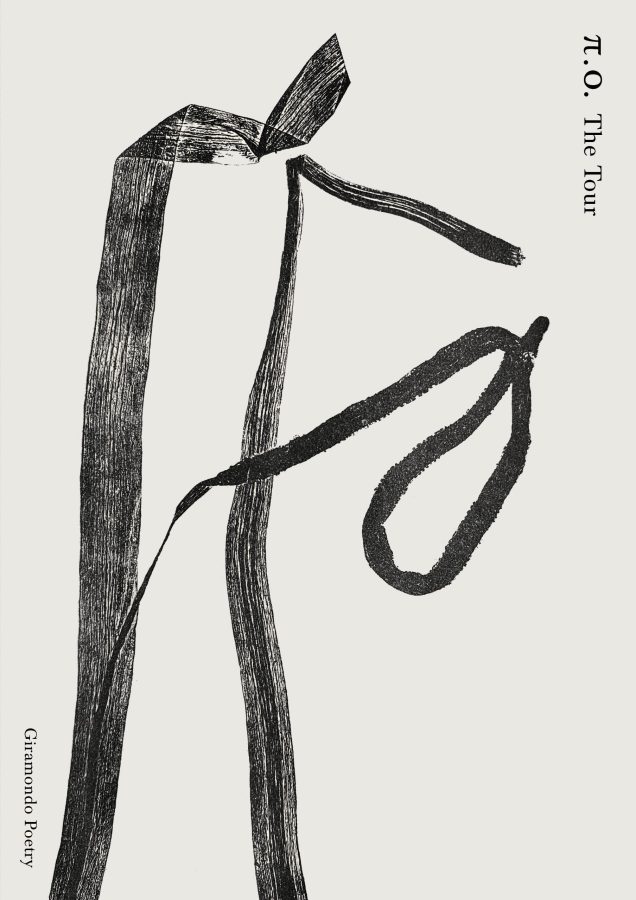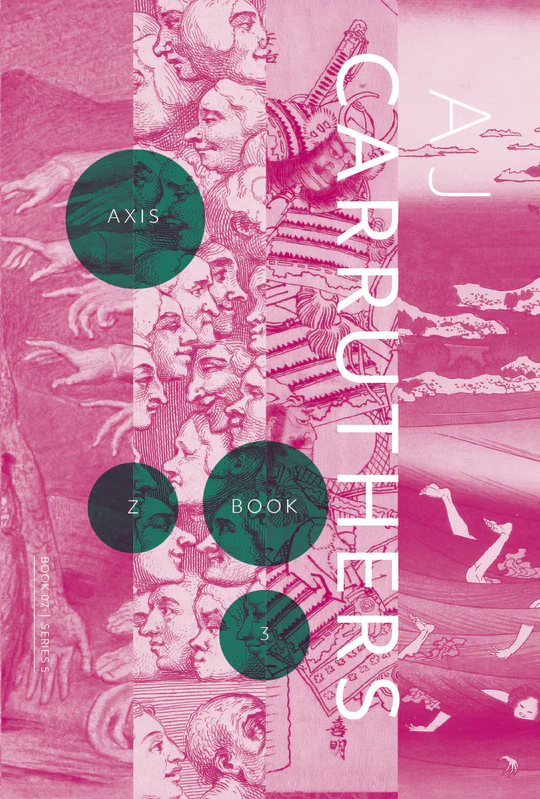The Ruin of Imaginary Gardens: on Forugh
Renowned in her lifetime for her emotionally intense and formally controlled modernist poetry, the sudden death of Iranian poet Forugh Farrokhzad at 32 years of age in 1967, at the peak of her literary powers, ensured the creation of a legendary aura around her life and poetic legacy.
In the half century since her death, Forugh (as she is affectionately known to Iranians) has become through multiple translations the best known modern Persian poet in English and other languages, as well a central writer – possibly the central writer – in the cultural imagination of the Iranian diaspora. Diaspora writers (especially women) who have left Iran early or late, engage openly or implicitly with the work and legacy of Forugh. Whether they write in English or Persian, poets of Iranian heritage face the ineluctable presence of her confident voice and literary personae. The boldness of that voice, together with the curtailment of her life, forge in the diaspora a shared sense of the interruptedness of lives, of lost promise, and the longing for a prelapsarian state. As Persis Karim, scholar of Iranian diasporic literature, has written, ‘Farrokhzad represents a particular moment in the history of modern Iran that for many first-generation immigrants has become frozen in time’.
In Iran itself, a country in which poetry is the highest art form, among writers, artists and intellectuals as well as millions of poetry lovers, her style and language are discussed and her thematic provocations resound. More difficult for non-Iranians to appreciate, the interactions of her modernist poetics with traditional Persian tropes continue to suggest models for writers of interwreathing personal, political, mythical and existential issues in highly symbolic poetic registers.
Among non-Iranians (except academics in Persian or Iranian studies), Forugh has until recently been known primarily to cinephiles, directors and historians of film. She played an influential role in the unfolding of Iranian art cinema (the ‘Iranian New Wave’) and her champions include critic Jonathan Rosenbaum and French auteur Chris Marker, who have celebrated her 1962 documentary, The House is Black (Khaneh Siah Ast).
However, the most recent collection of translations by Sholeh Wolpé, Sin: Selected Poems of Forugh Farrokhzad (2007), together with Jasmine Darznik’s fictional biography Song of a Captive Bird (2018) are bringing Forugh for the first time to a much wider, non-Iranian and non-specialist public. The mythologization of her life, already shared between writers in Iran and among ‘hyphenated’ Iranians in the diaspora, is being brought to the attention of non-Iranians, who are dependent for their knowledge on mediators such as Wolpé and Darznik as well as scholars such as Farzaneh Milani and Fatemeh Keshavarz.
In Jasmine and Stars: Reading More than ‘Lolita’ in Tehran, a response to Azar Nafisi’s much-criticised memoir Reading Lolita in Tehran, Keshavarz uses Forugh’s oeuvre to engage in a heated polemic. Keshavarz accuses Nafisi of a having written a ‘new Orientalist narrative’ by making Persian writing inferior to Western texts. Jasmine and Stars is exemplary in its elevation of Forugh – whom Keshavarz calls ‘The Voice of our Earthly Rebellion’ – as the epitomic Iranian woman who claims her right to speak and speak powerfully, representatively, on issues ranging from female sexuality to political injustice to universal ontological inquiries.
If, however, we examine Wolpé’s translation and Darznik’s novel together with the poetry of Iranian diasporic poets Granaz Moussavi and Fatemeh Shams (both of whom explicitly cite the influence of Forugh), we find significant differences in the reception of Forugh among different communities of Iranians.
Books, articles, films, radio specials, essays, and artworks, are still being made about Forugh. Artist Shirin Neshat says that Forugh is ‘very necessary for my work’, and prominently used Farrokhzad’s poetry in her Women of Allah series (1994). Director Abbas Kiarostami has drawn from her work repeatedly, including in his 1999 masterpiece The Wind Will Carry Us. Why is Forugh so omnipresent, so beloved, in national and transnational Persian literary spaces?
In the 1950s and 60s she was seen to speak to the ubiquitous and vexing matter of ‘tradition and modernity’ during the upheavals of the Shah’s (too) rapid Iranian modernisation process. There was excitement at her agitating arrival into unyielding, male-dominated literary spaces and the establishment through her first three collections of a sensual, yearning and impassioned voice. There was the injustice of the personal insults and innuendoes then (and in some cases still) made against her which has heightened the emotional charge of her life story. The turn in her last two collections toward sharply political and ontological questions has always been well received, a less ‘confessional’ yet still fervent late style, reaching for a prophetic register. The continuing effects of the 1979 Revolution mean that captivity and freedom, important concerns in her poetry, have become the most prevalent tropes in national and diasporic discourse. Finally, there is the riposte Forugh represents to decades of orientalist caricatures, racist stereotypes and slurs against Iranian people (and in particular against Iranian women) in Western corporate media and entertainment: as Persis Karim writes,
for many Iranian immigrants and exiles, Farrokhzād stands as a cultural representative who refutes the often singularised narrative of women’s oppression, and counteracts the plethora of negative media representations of contemporary Iranian life.
Born in 1935 as the third of seven children in a comfortable middle-class home, Forugh Farrokhzad married at sixteen, but divorced in a few years and subsequently lost custody of her son, a traumatic outcome. Her first collection in 1955, The Captive (Asir), was followed by the first of numerous nervous breakdowns and hospitalisations. The Wall (Divār), from 1956, and Rebellion (Esyān), 1958, ignited more controversy for their open treatment of feminine desire, spurring attacks from conservatives. Four years later The House is Black, her documentary set in a leper colony, received near universal acclaim. Another Birth, a collection of 35 poems published in 1964, was recognised by critics and the poet herself as a writerly maturation, with more compelling work in metaphor and style. According to Farzaneh Milani, ‘a move of concerns has taken place, from the personal to the collective, from the female to the human, and from [the] private to the public’. After time in Europe, her return to Tehran saw a final period of intense productivity. On February 14, 1967, she swerved to avoid an oncoming vehicle, was thrown from her car and died in hospital. A fifth collection, Let Us Have Faith in the Beginning of the Cold Season, was posthumously published in 1972, marked by recurring themes of loneliness, death and deformation, as well as visionary and tender poems.
Forugh’s turbulent life, gender and erotic subject matter have often overshadowed her work. Scholarship written in Persian has been restricted by the interest critics and the public alike have shown in biographical details. Darznik’s fictional biography continues this trend by focusing heavily on the dramatic moments of her life, often bypassing the complex development of her poetry. Published and distributed worldwide by Penguin Random House, the marketing for Darznik’s book is typical of Forugh’s presentation as intellectual and social revolutionary, backgrounding the complex particulars of her creative work and foregrounding her socio-political function as a woman who dared to overstep restrictions in spite of widespread condemnation by the social establishment. We read, for example, on the blurb that
this haunting novel uses the lens of fiction to capture the tenacity, spirit, and conflicting desires of a brave woman who represents the birth of feminism in Iran—and who continues to inspire generations of women around the world.
A brave woman, a feminist: common tropes in any discussion of Forugh. What do they mean for reading her poetry, and assessing her more literary and technical influence upon later writers? Forugh herself, in a late interview , insisted that explaining her work through her biography is ‘tiring and pointless’. She denied that her poems are a simple reflection of her life. Scholars agree there is a ‘biographical problem’ in Forugh’s legacy. In Forugh Farrokhzad, Poet of Modern Iran, Dominic Parviz Brookshaw and Nasrin Rahimieh write:
the impulse to read Farrokhzad’s poetry biographically has continued to dominate the critical interpretation of her works. The interest in the poet’s lifestyle is understandable […] but it is at odds with her own lack of interest in linking her biography and poetry.
Darznik’s book, aimed at a non-Persian speaking audience, may leave readers unfamiliar with Forugh’s poetry believing her work was based almost entirely in confession and autobiography. A confessional lens cannot handle the polyvalence of her work, especially the poems of Let Us Have Faith. The apocalyptic vision of ‘Someone Who Is Like No Other’, for example, which prophesies the coming of a Messianic judge who will ‘spread the tablecloth/and divide the bread’ between the rich and the poor of Tehran, is far outside the confessional mode. Similarly, the visionary ecstasy of ‘Window’, whose well-known fifth stanza Wolpé translates:
When love’s innocent eyes were bound
with the dark kerchief of law, and blood gushed
from my dreams’ unglued temples,
when my life was no longer anything,
nothing at all except the tick tick of a clock on the wall,
I understood that I must, must, must
deliriously love.
The word that Wolpé translates as deliriously, divāneh-vār, literally means, ‘crazily’ or ‘in a crazy way’. Divāneh,’crazy’, is one of the most frequent adjectives in Persian classical poetry. It creates an allusion to traditional Persian poetry not brought over into English. The madness or ‘drunkenness’ of love in Rumi and Hafez is valuable as it destroys a status quo predicated on prestige, reputation, and ‘getting and spending’ for a vision in which profit and loss mean nothing. Being made helpless by love is a requisite stage of transformation.
In cases like this the brief notes and vocabulary list provided by Wolpé do not go far enough, focusing only on quotidian words such as chador, mubarak, salaam, or the Iranian currency rial. Exegetical glosses of a literary, philosophical, theological nature should be provided to exposit these allusions, and to demonstrate the intertextuality of Forugh’s work with traditional sources, classical Persian poetry, and European modernism. The reader of Wolpé’s translations is not told, for example, that the collection Let Us Have Faith… has allusions and influences from Rumi, but this is significant, as it signals a change in her position on eros and love from her early poetry. Readers totally new to Forugh are liable to believe that she is sui generis. As Fatemeh Shams states succinctly: ‘She always had one eye back on tradition, and one eye toward the future’. Such mythmaking for a non-Persian speaking audience tends to cover over linguistic, stylistic and culturally specific aspects of the work, which are, admittedly, difficult to bring across. Yet those aspects matter precisely because of their alterity to an Americanised, global monoculture.
Wolpé, who has translated twelfth-century Persian poet Attar’s The Conference of the Birds into English and Whitman’s Song of Myself into Persian, is an exacting and elegant translator. Her sensitivity to Persian-English differences and understanding of themes of exile, belonging and uprooting – all pertinent to translating and understanding Forugh – come from her own itinerant life. Born in Iran, she moved first to the Caribbean, then the UK, before settling in the US. Wolpé states that she thus ‘arrived at English language not once, but three times.’ Wolpé’s translation features poems from all five of Forugh’s collections. The first three collections are placed together in one chapter, pointing to their common rhetoric of defiance, imprisonment, shame, and frustrated desire. Selections from Another Birth and Let Us Have Faith…are given in two separate chapters.
Apart from Forugh, who has been translated into English by around six different translators, modernist Persian poetry has not been widely brought into English. While the move toward concrete style and breaking of traditional prosodic form brought Persian poetry closer to European and English modernist styles, modernist poets such as Forugh, Nima Yushij (1895-1960), Mehdi Akhavan-Sales (1929-1990), and Ahmad Shamlou (1925-2000) among many others have maintained strong intertextual connections and dialogue with the Persian classical tradition. Forugh’s poetry appears more translatable than the other modernist poets because of the greater simplicity and directness of her language, and because of the investment of visual images with emotion in a quasi-cinematic style. That said, the extent to which her poems can be made to transcend culture and language-specific features may at times be deceiving.
In addition to nuances in tone and meaning, one clear issue in translation is the elegiac sound that mark Forugh’s poetry, a key part of her personal style. In the famous poem ‘Another Birth’, for example, the last stanza begins with the phrase, ‘Man/ pari-e kuchek-e ghamgini-rā/ mishenāsam keh dar oghyānus-i maskan dārad,/ va delash-rā dar yek neylabak-e chubin/ mi-navāzad, ārām, ārām’. Here I have marked the long ‘a’ sounds as ‘ā’, and if one listens to Forugh recite the lines, the long, drawn out syllables create a particular soundscape of melancholic beauty impossible to reproduce in English. Translations consistently fail to carry over this effect.
In Jacha Kessler and Amin Banani 1976’s translation of the poem, we get:
I know a sad little nymph
who lives in the sea
and plays the wooden flute of her heart
tenderly, tenderly
Scholar Ahmad Karimi-Hakkak’s translation:
I know
a sad little fairy
whose home is in an ocean
and who softly, softly,
pours her heart out into a flute
Finally, Wolpé’s translation, found here, gives us:
I know a sad little fairy who lives in the sea
and plays the wooden flute of her heart tenderly,
tenderly . . .
These lines are crucial as the poem in its conclusion pivots to escape and transformation from restraint and captivity, as expressed in the repetition of the word sahm, portion or lot, in the previous lines, ‘My lot is descending a lonely staircase/ to something rotting and falling apart in its exile.’ The fairy or nymph gives us the birth of the poem’s title, as the fairy ‘dies at night with a kiss/ and is reborn with a kiss at dawn.’ (Wolpé). The fairy’s sorrow is thus transformed by love, hinting also, through the metaphor of the flute, at poetry’s role in rebirth or second birth. The resemblance of Wolpé’s translation to Kessler and Banani’s is clear, with only the word ‘nymph’ changed to’ ‘fairy’. Rhyming ‘sea’ and ‘tenderly’ suggests the long syllables of the original, but the English features much shorter syllables and a less sorrowful sonic ambience. Because Persian verbs come at the end of phrases, ‘I know’ comes after ‘sad little fairy’, so the verb is only understood after the object has been heard. This is but one example of the untranslatable features of Forugh’s original Persian.
Other examples of unreproducible features, should, however, be explained by Wolpé but are not. The first (extremely well known) line of the same poem is: ‘Hameh-ye hasti-ye man āyah-ye tārik-ist’, which Wolpé gives as ‘All my being is a dark verse’. An ayah is a verse from the Qur’an. Additionally, it can mean ‘sign’, ‘proof’, or even ‘symbol’. A ‘sign of God’ or ‘holy sign’ would capture the widest ambit of signification, covering both the actual verses of the Qur’an as well as any miraculous event, and even the natural world as theophany or divine manifestation. In other translations, ‘chant’ or ‘word’ are chosen instead of ‘verse’. Forugh uses the word to suggest indestructibility, since an ayah encompasses what is sacred, eternal and, by extension, enduringly poetic. Clearly, in English these associations are lost. Forugh’s poetry is not normatively or orthodoxly religious. Yet it does not inhabit a sceptical or materialist post-Enlightenment epistemological frame.
This aspect does not always come through in Darznik’s biography. Darznik was born in Iran and went to the US at five. Her doctoral thesis was on the subject of Iranian women’s memoirs (Writing outside the veil: Writing by Women in the Iranian Diaspora) and examines notable and popular works by Iranian diasporic women, among them Lipstick Jihad by Azadeh Moaveni and Persepolis by Marjaneh Satrapi. In a statement typical of diasporic Iranians, Darznik has stated that she feels connected to Forugh due to a shared sense of exile or alienation as well as for her ability to enunciate other selves or ways of being:
For me, a young Iranian-American woman coming of age in 1990s California, reading Forugh’s poems felt like crossing into a different country, into a different idea of what it meant to be a woman, into different possibilities for whom I myself could become.
Song of a Captive Bird draws upon a wide range of historical sources, but involves creative liberties and fantasy whenever, according to Darznik, ‘the gaps and fissures in the historical record opened a space for invention.’ The novel, in taking place so far from the Persian linguistic milieu, is restricted by its inability to uncover the deeper significance of Forugh’s literary achievement, and therefore depends upon Forugh as social pariah or outcast. Forugh’s poetry is dropped in from chapter to chapter, at times unfortunately giving the impression that the poems are written by someone other than the first-person narrator, the ‘Forugh’ of the text. Darznik’s use of selected words from Persian – familiar ones such as hamam, droshky, jinn but also the Persian for ordinary words such as ‘bride’, ‘foreigner,’ or ‘broken’ – tends to create the sense of an exoticism for a Western readership. Another limitation is frequent narrative foreshadowing that creates a smoothness not appropriate to the fractious excesses and fervency of Forugh’s romantic and creative impulses. Lines like this are typical:
It was the end of my girlhood, though I didn’t know it yet…
For a long time I was afraid to tell anyone about what happened to me or even to let myself think about it at all, but I can tell you now that day was the end of my girlhood and the true beginning of my life. It always will be.
These phrases seem made for the audience’s ease, not for a difficult reckoning with Forugh’s growth.
Because the role of eros in Persian culture and writing is not explained, readers are apt to view Forugh’s closely-detailed love life as a matter of romantic obsession or dependency. While Forugh’s broken relationship with her father has been incorporated into psychoanalytic interpretations of her romantic poems and to account for her recurrent concern with falling in love, the wider ambit of erotics in Persian poetry is an important contextual element, where love means the power of transformation. In ‘Border Walls’, for instance, Forugh declares that her ‘body’s altar is ready for love’s worship’. She concludes the poem: ‘perhaps my love may be/ the birth cradle of another Christ.’ These are not metaphysical claims, but they point to the development of an erotic poetics that sees love as richer in signification than can be accounted for by psychologised and individualist worldviews.
As the scholarship of Safaneh Neyshabouri has made clear, biographical readings have emphasised the frequent constant comparison of Farrokhzad to Sylvia Plath. Pained by cold and harsh fathers, the argument goes, Farrokhzad and Plath both repeatedly sought paternal and idyllic love, painfully knew divorce and motherhood, suffered nervous breakdowns, attempted to commit suicide multiple times, and both died early and tragically. Such comparisons may hamper understanding of Forugh. For one thing, much more than Plath, Forugh represented a direct political threat. In 1958, Forugh co-directed a documentary about an oil refinery fire in the south of Iran, during which she came to understand the brutal exploitations of British colonial presence. The fire took three months to contain partly because the British had assiduously avoided letting Iranians understand the mechanics and engineering of the refinery. Forugh’s political awakening involved coming to see the destructive role of the Iranian nouveau riche (the ‘petro-bourgeoisie’ that Richard Kapuscinski excoriated in Shah of Shahs), who were dazzled and made arrogant by oil windfalls. As Darznik tells it, Forugh lambasts this greed and lassitude:
We bought plastic roses and decorated our lawns and courtyards with plastic swans. We had pizza shops, supermarkets, and bowling alleys. We had traffic jams, skyscrapers, and air thick with noise and pollution. We had illiterate villagers [but] still our oil wasn’t our own, our country wasn’t our own.
Forugh’s growing awareness of social issues took place alongside her own self-development and self-exploration. This is a development that Darznik explores effectively and which she uses memorably to offset against Forugh’s painful mental breakdown and institutionalisation. When recounting periods of such growth and decline, Darznik’s narrative finds an urgency that reveals something to newcomers of why Forugh matters outside of her familiar feminist iconicity.
The gravesite of Forugh in Tehran features in a brief yet important scene in the Iranian-Australian co-production My Tehran for Sale, made by the poet and writer-director Granaz Moussavi, who lives between Iran and Australia. The main character Marzieh, who is ill and seeking asylum in Australia, takes Saman, who is visiting Iran from Australia, to see the grave, but they find the cemetery locked. The closure is shown in an understated way, but the symbolism is rich and polyvalent, hinting at the shutting out of young Iranians from their own society while also throwing into doubt the efficacy even of poetry, the artform which means more above all to Iranians and Persian-speakers, to address pressing social issues and displacement. Such precarities of signification are also prominent in the poems of Moussavi, whose six poetry collections have engaged with Forugh’s legacy to explore the liminality of diasporic life and the fragility of the quests to return to the departed land and belong in the new one.
Moussavi’s poetry has not had the benefit of distribution by major publishing houses. Her later work has been self-produced and circulated by hand. In the collection The Forbidden: Poems from Iran and its Exiles, Sholeh Wolpé translates a number of poems by Moussavi, including the juvenilia piece written at sixteen, ‘Me’:
I’m neither a person, nor a finch
I’m just a small accident
that happens every time
and I break in two
one half swept off by the wind
the other, by a man I do not know.
Although elegant and elliptical, here Forugh’s influence overshadows the poet’s own voice. The wind that dissolved the deracinated young woman alludes too obviously to Farrokhzad’s poem ‘Another Birth’:
There is an alley where boys who once loved me still stand
with the same tousled hair, thin necks, and scrawny legs,
contemplating the innocent smiles of a young girl
swept away one night by the wind.
In contrast, the poem ‘Taziyeh’, from her fourth collection Red Memory, demonstrates a confident poetic rhetoric that aims to meet and resist Forugh’s influence in poetic agon. Taziyeh is the passion play or ritual theatre common to Iranian Shi’ism, re-enacting the central event in Shia history, the martyrdom of the saint Hussain and his Shia followers at Karbala in present day Iraq. Moussavi begins the poem with the Arabic ‘wa’t-tin o wa’z-zaytun’, ‘By the fig and by the olive’, a phrase from a chapter of the Qur’an in which God ‘swears’ by the fig and olive. Later in the poem, she uses the phrase Alif La Min, referring to the recurring use of the letters A-L-M at the beginning of chapters of the Qur’an (muqattaʿat). The poem radically reappropriates these Qur’anic textual features and the mythos of Hussain’s martyrdom at Karbala to create a prophetic social protest poem. As well as Hussain, allusions are made to the Sufi martyr Mansur Al-Hallāj, who was killed and cut to pieces for political reasons (though ostensibly for religious blasphemy). Synonyms for the word ‘throat’ appear throughout:
We kept lifting the dagger and alas, we gagged!
We kept drawing kohl and Ya Hu! We were torn to pieces,
Our throats cut as on Ashoura.
The throat’s pain and vulnerability is an allusion to the events at Karbala where Hussain’s camp were sieged and their water cut off by the army of Yazid, seen as the unrighteous usurper of Hussain’s righteous leadership. When Hussain’s small son, Abdullah, cries out for water, an arrow is shot into his throat. For contemporary Iranian poets the symbolism of being slain as one cries out for help clearly takes on an added significance to the normative Shia mythos. As can be heard in Moussavi’s recitation, the poem ripples with alliteration, wordplay, and allusions. The consonants t, k, h recur throughout in many words, letters that together make the word tekkeh, ‘piece’, part of the phrase tekkeh shodan, ‘to be cut into pieces’. With the poem’s frantic rhythms, these recurring sounds aim to recreate the sound of being ripped apart. At the poem’s conclusion, the martyrs Hallāj and Hussain are transformed into a woman, Hagar, the banished wife of Abraham. In Moussavi’s closing lines, Hagar is torn apart by a mob and her throat, more specifically her larynx, is grabbed and closed. The proximity of larynx, hanjar, and Hagar, Hājar, weave the entire poem’s disparate threads even more tightly, throat and larynx clearly alluding to personal voice. Written and delivered by an Iranian woman, Hagar’s exile and her thirst in the desert as a rewriting of the killing of the saints Hallāj and Hussain are strident political commentary. However, the epistemic value of the Karbala mythology is more relevant than Christ’s passion would be for many contemporary poets writing political poems in English, the poem’s prophetic register intertextually relating to Forugh’s late poetry and to her voiceover in The House is Black. Unlike most of Forugh’s oeuvre, however, the poem is virtually impossible to translate into English.
Iranians born outside Iran or those like Darznik who left very young, having English as their primary linguistic domain, tend to be free of ‘anxiety of influence’ from major Persian writers. Poets writing in Persian, in contrast, must respond to Forugh’s aesthetic achievement through the development of a strong voice poetic, as accomplished in ‘Taziyeh’.
Fatemeh Shams has been required to develop the same resistance. Her first collection When They Broke Down the Door (2016), translated into English by Dick Davis, continues themes already developed in prior published letters written to her then-imprisoned husband, marked by a language of romantic longing and socio-political protest, where the erotic body is politicised. Her poems very often treat exile and banishment as themes, Shams being unable to return to Iran and now affected by the inhuman travel-ban imposed in the US, describing herself as having entered a ‘long phase of suspension and uncertainty.’ Exile is often treated in an interiorised way, as in her ghazal, ‘The Wager’ (recited here in Persian):
We were alive, but within ourselves we had died
We’d choked down the outlawed words we were forced to hideWe were alive, but silent, alone, and homesick,
Disheartened by the scars we’d endured side by sideWe were shoulders, embraces, tears, and our cries, alone
In a strange town, suffering the wounds that we bore insideAnd though horror and fear made their nest in our souls
We would not believe in our loss, defeat was deniedWe stood and we died so that life would take hold, making
The wager, in this solitary grave where we’ve died.
Davis has reproduced the monorhyme of the ghazal form, but to do so he has cut terms that in Persian carry more emotional heft. In the third couplet, Davis renders as ‘scars’ what would be better translated as a ‘smarting wound’, though dāgh can mean scar also. Being made ‘disheartened’ by these wounds is inadequate for the Persian virāneh o sarkhordeh, which refer to ruination and stunning respectively: ‘destroyed and stunned by our burning wounds’ is the true sense. Virāneh is an especially important term that has intertextual allusions to classical Persian poetry, being a word frequently used by Rumi and Hafez. To become ruined, like the trope of intoxication, is a process by which spiritual lovers of God annihilate or ruin their sense of a separate ego, a negativity and destruction leading to transformation and re-creation. For diasporic or exiled Iranian poets, the word connects these aesthetic and spiritual meanings to contemporary political dynamics, the destruction of reformist hopes, the ruination of promising lives and exilic uprooting. Shams uses the word again as virāneh-gi, the abstract noun meaning ‘ruination’, in the second-last couplet, which Davis translates as ‘loss’, whereas it is closer to ‘we refused to believe in our own destruction’ or even ‘we had no faith in our own desolation’. The word used for ‘faith’, imān, confirms the intertextual reference to the title poem from Forugh’s posthumous fifth collection, Let us Have Faith in the Beginning of the Cold Season, which centres on the theme of ruination:
Let us believe in the dawn of the cold season.
Let us believe in the ruin of imaginary gardens,
in idle inverted scythes,
in confined seeds.
The trope of ruins and being ruined evoke Hamid Naficy’s definition of inaccessible exilic longing:
what turns an émigré, expatriate, refugee, immigrant, or a person in diaspora into an exile is this double relationship to location: physically located in one place while dreaming of an unrealizable return to another.
In Rumi, Hafez, and other mystical Persian poets, longing for the departed or lost beloved makes one ‘wrecked’ or kharāb (another synonym for ruin), leading to frequent admission of ineffability and the inadequacy of language. In her tenderly crafted ghazal, ‘Things to Say’, Shams intertextually alludes to both Forugh and Hafez, especially the famous Hafezian ghazal that ends in the refrain keh mapors, ‘that…don’t ask’, as in ‘I’ve suffered love’s pain so much that…don’t ask!’ Each couplet in Shams’ poem ends with the refrain goftan nadārad keh which Davis translates as the emotionally much flatter, ‘there’s nothing to say’. As Davis has stated in his essay ‘On not translating Hafez’, ineffability is a trope difficult to reproduce in English, as ‘there is not a rhetoric readily available in English for talking around and hinting toward what cannot be directly stated.’ Together the tropes of ruination, silence and ineffability constitute multivalent significations that link classical Persian poetry to the modernist innovations of Forugh, and then through to contemporary post-revolutionary poetry by Moussavi, Shams, and other national and transnational Iranian poets. Forugh’s poem ‘Summer’s Green Waters’ from Another Birth points to the power Persian poetry has located in ruination, emptiness, loneliness and (actual or metaphorical) exile:
A woman sang in summer’s green waters,
Empty hands do not calm the anxiety
of full hands. Beautiful is the silence of ruins,
as if she herself lived among the ruins.
Emigrés of Iranian heritage involved in the arts are both burdened and nourished by Forugh’s influence. To understand her lasting power, one must understand the aesthetic, imaginative and spiritual power her bold Persian style made possible for later poets, and not simply allow her to become a cipher for the stories of nostalgic exiles or an icon of political activism. The tragic medieval history of Iran gave rise to sorrow-drenched classical Persian lyric, where material destruction was allegorised to become spiritual power: the lover must be ‘wrecked’ to be transformed. Forugh’s romantic suffering, born of existential pain and social castigation, recharged the ossified language of traditional style, allowing for Iranian women like Moussavi and Shams to explore exile, silence, and destruction as sites of creative feminine power. Forugh sang of intense loneliness and loss in an unguardedly heartbroken Persian voice. Such cultural alterity and agony of eros should not be effaced for pure positivity and sameness costumed as diversity.
Works Cited
Abbasi, Hasti. Dislocation, Writing, and Identity in Australian and Persian Literature. Basingstoke, England: Springer, 2018.
Amirrezvani, Anita, and Persis Karim. Tremors: New Fiction by Iranian American Writers. Fayetteville, AR: University of Arkansas Press, 2013.
Brookshaw, Dominic Parviz, and Nasrin Rahimieh. Forugh Farrokhzad, Poet of Modern Iran: Iconic Woman and Feminine Pioneer of New Persian Poetry. London, United Kingdom: I.B.Tauris, 2010.
Cohen, Robin, and Carolin Fischer. Routledge Handbook of Diaspora Studies. London, England: Routledge, 2018.
Darznik, Jasmin. Song of a Captive Bird. Penguin Random House, 2018.
Ebrahimi, Mehraneh. Women, Art, and Literature in the Iranian Diaspora. Syracuse, NY: Syracuse University Press, 2019.
Farrokhzad, Forugh. (Original works in Persian). Asir (Captive) Tehran, 1955.
—. Divār (The Wall). Tehran, 1956.
—. ʿEṣyān (Rebellion). Tehran, 1958.
—. Tavallod-ī dīgar (Another Birth). Tehran, 1964.
—. Imān biāvarim be āghāz-e faṣl-e sard. Let Us Have Faith in the Beginning of the Cold Season. Tehran, 1972.
Fotouhi, Sanaz. The Literature of the Iranian Diaspora: Meaning and Identity Since the Islamic Revolution. London, United Kingdom: I.B.Tauris, 2015.
Hillmann, Michael. “Fourteen Poems by Forugh Farrokhzād,” Literature East and West 20, 1976, 111-29.
—. A lonely woman: Forugh Farrokhzad and her poetry. Three Continents Press, 1987.
Javadi, H. and S. Sallee (translators). Another Birth: Selected Poems of Forugh Farrokhzad. Emeryville, Calif., 1981.
Kessler, J. and A. Banani, (translators), Bride of Acacias: Selected Poems of Forugh Farrokhzad, Delmar, N.Y., 1982.
Karim, Persis M. Let Me Tell You Where I’ve Been: New Writing by Women of the Iranian Diaspora. Fayetteville, AR: University of Arkansas Press, 2006.
Kassam, Sabrina. Individualism and social conformity in the poetry of Furugh Farrukhzad.
McGill University (Canada), ProQuest Dissertations Publishing, 1986.
Milani, Farzaneh. Veils and Words: The Emerging Voices of Iranian Women Writers. Syracuse, NY: Syracuse University Press, 1992.
—. Words Not Swords: Iranian Women Writers and the Freedom of Movement. Syracuse, NY: Syracuse University Press, 2011.
Mobasher, Mohsen M. The Iranian Diaspora: Challenges, Negotiations, and Transformations. Austin, TX: University of Texas Press, 2018.
Moussavi, Granaz. My Tehran for Sale: A reflection on the aesthetics of Iranian poetic cinema. PhD Dissertation. 2011.
—. Red Memory (Hafezeye Ghermez). Australia, 2011.
Naghibi, Nima. Women Write Iran: Nostalgia and Human Rights from the Diaspora. Minneapolis, MN: University of Minnesota Press, 2016.
Neyshabouri, Safaneh. “The Development of the Artistic Female Self in the Poetry of Forugh Farrokhzad”, in Mannani, Manijeh, and Veronica Thompson, Familiar and Foreign: Identity in Iranian Film and Literature. Alberta: Athabasca University Press, 2015.
Pishbin, Shaahin. “Forugh Farrokhzad and the Persian Literary Canon,”. Iran Namag. Volume 1, Number 4 (Winter 2017), XXIV-LI .
Seyed-Gohrab, Ali A. Metaphor and Imagery in Persian Poetry. Leiden, Netherlands: BRILL, 2011.
Shams, Fatemeh. When They Broke Down the Door: Poems. Mage Publishers, 2016.
Sullivan, Zohreh. Exiled Memories: Stories of Iranian Diaspora. Philadelphia, PA: Temple University Press, 2010.
Sumner, Fiona. “Between Nostalgia and Activism: Iranian Australian Poetry and Cinema”. Journal of the Association for the Study of Australian Literature. Sydney, Vol. 12, Iss. 2, (2012): 1-11.
Talebi, Niloufar. New Poetry by Iranians Around the World. Berkeley, Calif. : North Atlantic Books, 2008.
Wolpé, Sholeh. Sin: Selected Poems of Forugh Farrokhzad. Fayetteville, AR: University of Arkansas Press, 2010.
—. The Forbidden: Poems from Iran and its Exiles. MSU Press, 2012.
